Elias B. Issa
Brain-like Flexible Visual Inference by Harnessing Feedback-Feedforward Alignment
Oct 31, 2023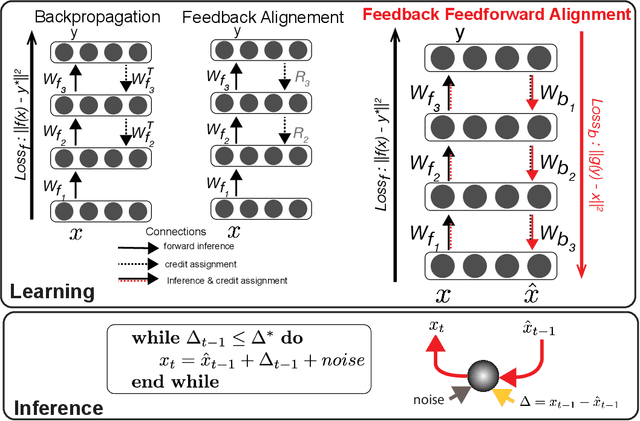
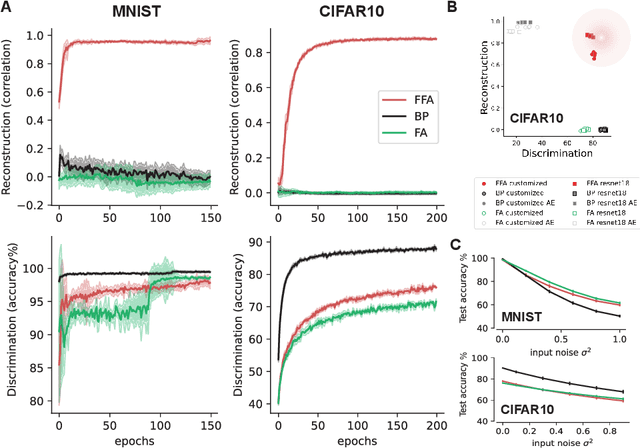
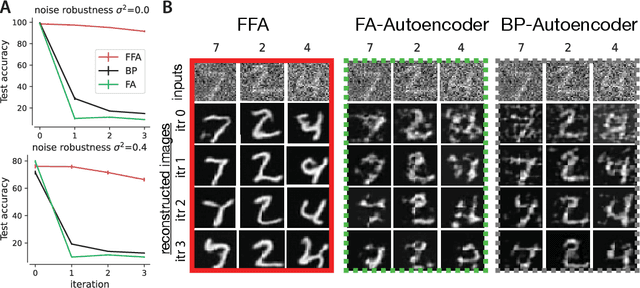
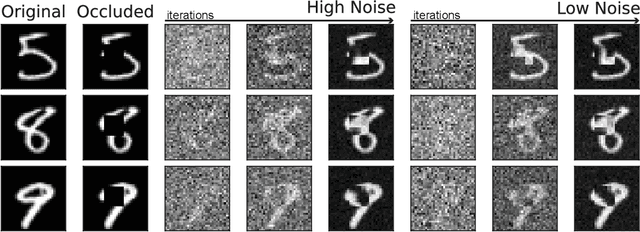
Abstract:In natural vision, feedback connections support versatile visual inference capabilities such as making sense of the occluded or noisy bottom-up sensory information or mediating pure top-down processes such as imagination. However, the mechanisms by which the feedback pathway learns to give rise to these capabilities flexibly are not clear. We propose that top-down effects emerge through alignment between feedforward and feedback pathways, each optimizing its own objectives. To achieve this co-optimization, we introduce Feedback-Feedforward Alignment (FFA), a learning algorithm that leverages feedback and feedforward pathways as mutual credit assignment computational graphs, enabling alignment. In our study, we demonstrate the effectiveness of FFA in co-optimizing classification and reconstruction tasks on widely used MNIST and CIFAR10 datasets. Notably, the alignment mechanism in FFA endows feedback connections with emergent visual inference functions, including denoising, resolving occlusions, hallucination, and imagination. Moreover, FFA offers bio-plausibility compared to traditional backpropagation (BP) methods in implementation. By repurposing the computational graph of credit assignment into a goal-driven feedback pathway, FFA alleviates weight transport problems encountered in BP, enhancing the bio-plausibility of the learning algorithm. Our study presents FFA as a promising proof-of-concept for the mechanisms underlying how feedback connections in the visual cortex support flexible visual functions. This work also contributes to the broader field of visual inference underlying perceptual phenomena and has implications for developing more biologically inspired learning algorithms.
Brain-like representational straightening of natural movies in robust feedforward neural networks
Aug 26, 2023



Abstract:Representational straightening refers to a decrease in curvature of visual feature representations of a sequence of frames taken from natural movies. Prior work established straightening in neural representations of the primate primary visual cortex (V1) and perceptual straightening in human behavior as a hallmark of biological vision in contrast to artificial feedforward neural networks which did not demonstrate this phenomenon as they were not explicitly optimized to produce temporally predictable movie representations. Here, we show robustness to noise in the input image can produce representational straightening in feedforward neural networks. Both adversarial training (AT) and base classifiers for Random Smoothing (RS) induced remarkably straightened feature codes. Demonstrating their utility within the domain of natural movies, these codes could be inverted to generate intervening movie frames by linear interpolation in the feature space even though they were not trained on these trajectories. Demonstrating their biological utility, we found that AT and RS training improved predictions of neural data in primate V1 over baseline models providing a parsimonious, bio-plausible mechanism -- noise in the sensory input stages -- for generating representations in early visual cortex. Finally, we compared the geometric properties of frame representations in these networks to better understand how they produced representations that mimicked the straightening phenomenon from biology. Overall, this work elucidating emergent properties of robust neural networks demonstrates that it is not necessary to utilize predictive objectives or train directly on natural movie statistics to achieve models supporting straightened movie representations similar to human perception that also predict V1 neural responses.
* 21 pages, 15 figures, published in ICLR 2023
Brain-Like Object Recognition with High-Performing Shallow Recurrent ANNs
Oct 28, 2019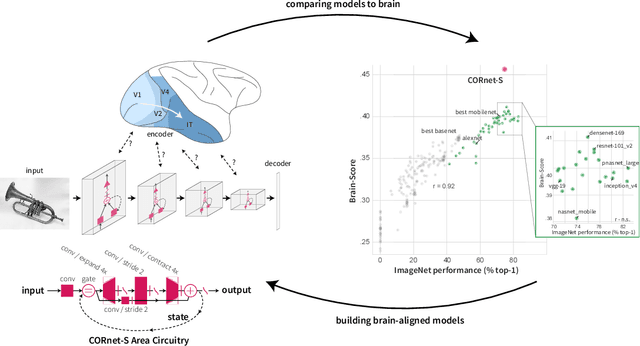
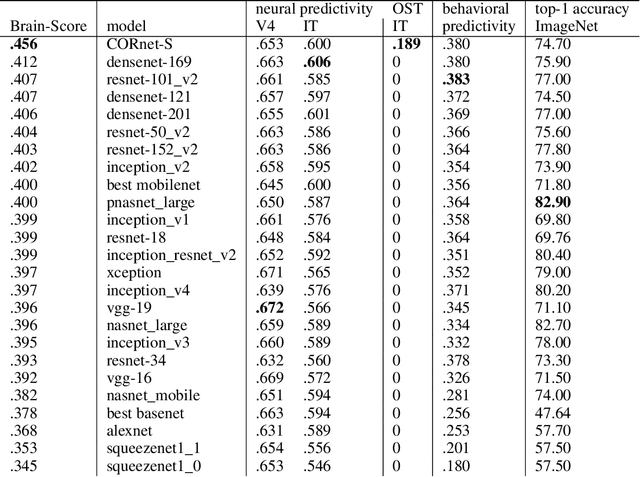

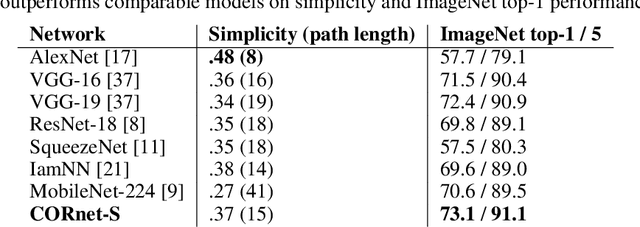
Abstract:Deep convolutional artificial neural networks (ANNs) are the leading class of candidate models of the mechanisms of visual processing in the primate ventral stream. While initially inspired by brain anatomy, over the past years, these ANNs have evolved from a simple eight-layer architecture in AlexNet to extremely deep and branching architectures, demonstrating increasingly better object categorization performance, yet bringing into question how brain-like they still are. In particular, typical deep models from the machine learning community are often hard to map onto the brain's anatomy due to their vast number of layers and missing biologically-important connections, such as recurrence. Here we demonstrate that better anatomical alignment to the brain and high performance on machine learning as well as neuroscience measures do not have to be in contradiction. We developed CORnet-S, a shallow ANN with four anatomically mapped areas and recurrent connectivity, guided by Brain-Score, a new large-scale composite of neural and behavioral benchmarks for quantifying the functional fidelity of models of the primate ventral visual stream. Despite being significantly shallower than most models, CORnet-S is the top model on Brain-Score and outperforms similarly compact models on ImageNet. Moreover, our extensive analyses of CORnet-S circuitry variants reveal that recurrence is the main predictive factor of both Brain-Score and ImageNet top-1 performance. Finally, we report that the temporal evolution of the CORnet-S "IT" neural population resembles the actual monkey IT population dynamics. Taken together, these results establish CORnet-S, a compact, recurrent ANN, as the current best model of the primate ventral visual stream.
 Add to Chrome
Add to Chrome Add to Firefox
Add to Firefox Add to Edge
Add to Edge